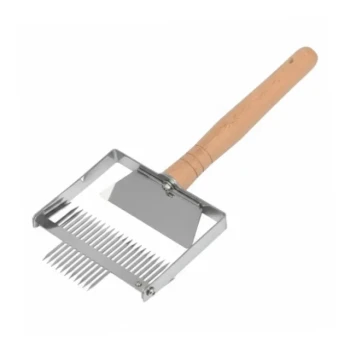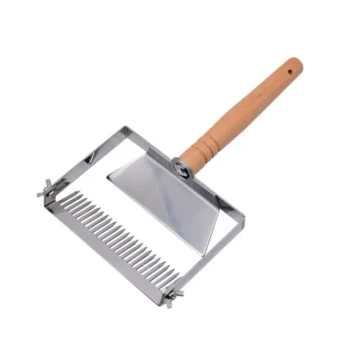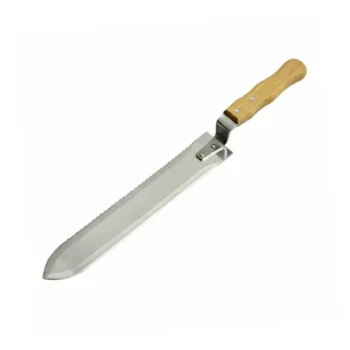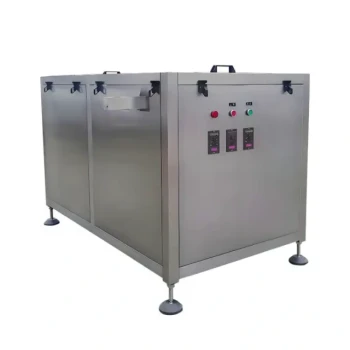To prepare honeycombs for extraction, you must first clear the bees from the frames, transport the frames in a sealed container to a clean workspace, and then remove the wax cappings that seal each honey-filled cell. This final step, known as uncapping, is the most crucial preparation for getting the honey to flow.
Your goal is not merely to get honey out of the comb, but to do so cleanly and efficiently. The preparation method you choose is dictated by your extraction technique—either preserving the comb for reuse with a centrifugal extractor or destroying it with a crush and strain method.
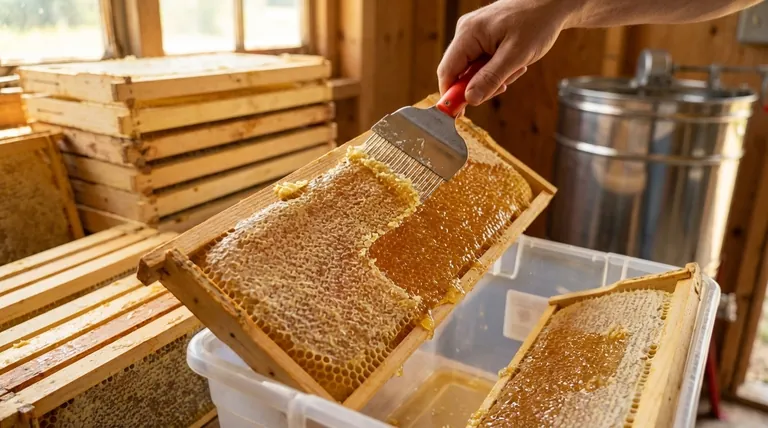
The Three Stages of Honeycomb Preparation
A successful and clean honey harvest depends on a methodical, step-by-step process. Each stage is designed to protect the honey's quality and make the entire process manageable.
Stage 1: Clearing Bees from the Frames
Before you can work with the honey, you must separate the bees from their finished product. This should be done at the hive site.
The most common methods are using a bee brush to gently sweep bees off each frame or using a blower to move them away from the supers. For a less frantic approach, a bee escape board can be placed in the hive 24 hours prior, allowing bees to leave the honey supers but not re-enter.
Stage 2: Secure Transport to Your Extraction Area
Once the frames are free of bees, they must be moved immediately to your designated extraction space, often called a "honey house."
Place the bee-free frames into a sealed, food-grade container or a closed box. This is critical to prevent robber bees from other hives from descending on your harvest and to keep the honey free from dust and debris during transport.
Stage 3: Uncapping the Honey Cells
This is the final and most direct preparation of the comb itself. The bees seal each cell of cured honey with a fresh layer of beeswax, called a capping. You must remove this to let the honey out.
Using a specialized uncapping knife (which can be heated) or an uncapping fork/scratcher, you slice or scrape off just the top layer of wax. The goal is to open the cells with minimal damage to the underlying comb structure, especially if you plan to reuse it.
The Two Core Extraction Philosophies
The way you uncap and handle your combs is fundamentally tied to how you plan to extract the honey. There are two primary approaches, each with its own set of preparations and consequences.
The Preservation Method: Centrifugal Extraction
This is the most efficient and standard method for beekeepers with more than a couple of hives. After uncapping, frames are placed in a honey extractor.
This machine uses centrifugal force to spin the honey out of the cells without destroying the comb. The empty, intact combs can then be returned to the hive, saving the bees an enormous amount of energy they would have spent rebuilding.
The Destructive Method: Crush and Strain
For this method, there is no need for careful uncapping. The entire honeycomb is cut from the frames and broken into smaller pieces.
These pieces are then placed in a honey press or a simple bucket-and-filter system. The honey is either squeezed out by force or drains out via gravity. As the name implies, this process destroys the comb, which is then typically rendered for its beeswax.
Understanding the Trade-offs
Your choice of method is a balance between initial cost, long-term efficiency, and the health of your bee colony.
The Cost of Equipment
The crush and strain method is very low-cost, requiring little more than food-grade buckets, strainers, and something to press the comb with. In contrast, a centrifugal extractor is a significant investment, ranging from hundreds to thousands of dollars.
The Value of Drawn Comb
This is the most important factor. Bees consume roughly eight pounds of honey to produce just one pound of wax. By preserving the comb with an extractor, you give your bees a massive head start for the next season. They can immediately begin filling the preserved comb with nectar instead of spending weeks rebuilding it from scratch. This dramatically increases your potential honey yield over time.
Labor and Honey Quality
Both methods can produce exceptionally clean honey if performed correctly. The crush and strain method often requires more effort in filtering to remove small particles of wax. Centrifugal extraction produces cleaner honey initially but requires the upfront labor of careful uncapping.
Making the Right Choice for Your Harvest
Your decision should align with your beekeeping goals and scale.
- If your primary focus is a low-cost, small-scale hobby: The crush and strain method is a perfectly acceptable way to harvest honey from one or two hives without a large upfront investment.
- If your primary focus is long-term efficiency and maximizing honey production: Investing in a centrifugal extractor is the definitive choice, as preserving your drawn comb is the single best way to ensure larger harvests year after year.
Properly preparing your combs is the first step toward a rewarding and valuable honey harvest.
Summary Table:
| Preparation Stage | Key Action | Recommended Tools/Equipment |
|---|---|---|
| Stage 1: Clearing Bees | Separate bees from frames at the hive. | Bee brush, bee blower, or escape board. |
| Stage 2: Secure Transport | Move bee-free frames to a clean workspace. | Sealed, food-grade container or closed box. |
| Stage 3: Uncapping Cells | Remove wax seals from honey-filled cells. | Heated or cold uncapping knife, or uncapping fork. |
Ready to scale your honey harvest with professional equipment?
For commercial apiaries and distributors, the right tools are essential for efficiency and maximizing yield. HONESTBEE supplies durable, high-performance beekeeping supplies and equipment through wholesale-focused operations.
Let us help you equip your operation for success. Contact HONESTBEE today for wholesale pricing on extractors, uncapping tools, and more.
Visual Guide
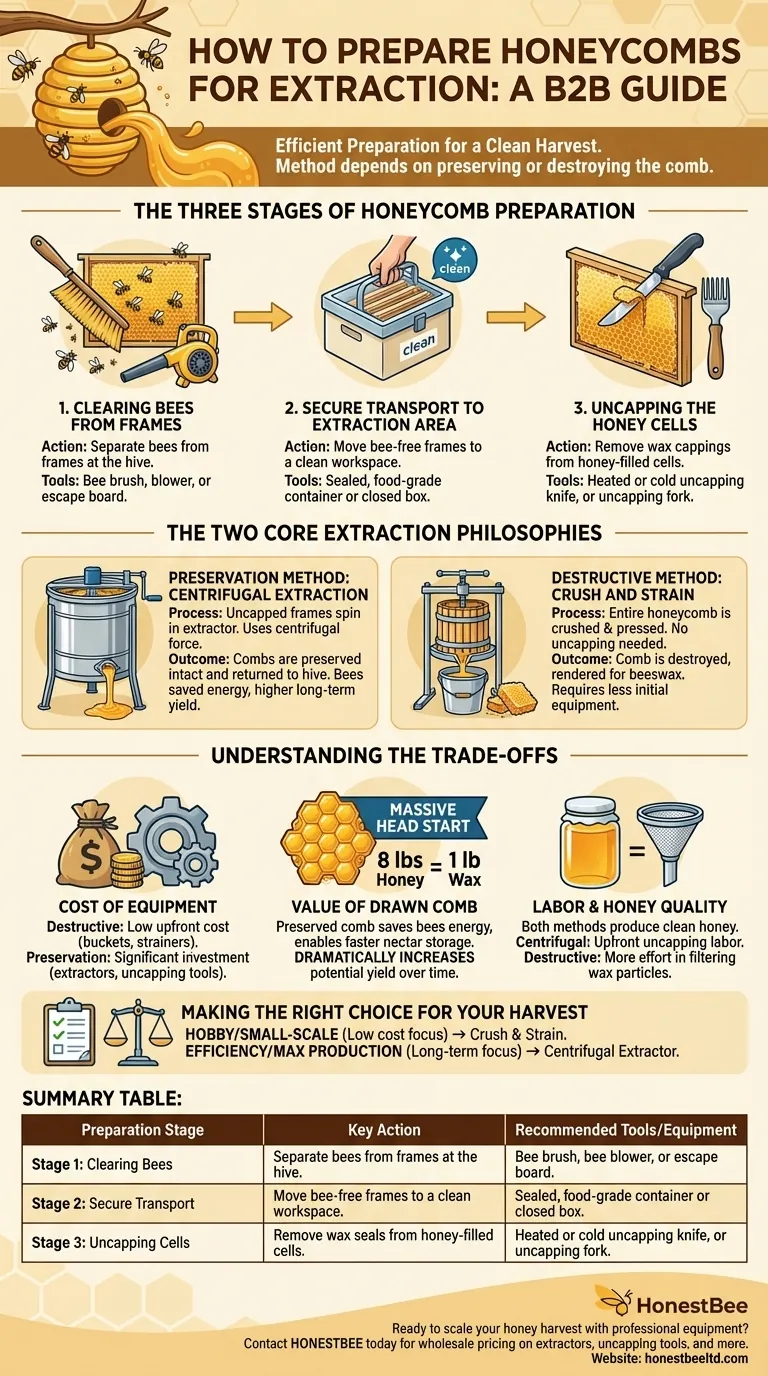
Related Products
- Professional Extra-Wide Uncapping Fork with Bent Tines for Beekeeping
- Stainless Steel Double Sided Honey Uncapping Fork with Scraper
- Wide Adjustable Stainless Steel Honey Uncapping Fork with Scraper
- Stainless Steel Dual Blade Uncapping Plane
- Extra Wide Stainless Steel Honey Uncapping Fork with Scraper Beekeeping Tool
People Also Ask
- What tools can be used to remove the beeswax capping? Choose the Right Tool for Your Harvest
- How do you encourage bees to cap honey? Optimize Hive Conditions for a Perfect Harvest
- How does comb depth affect the efficiency of uncapping tools? Match Your Tool for a Faster Harvest
- What other tools are available for honey uncapping besides knives? Find the Right Tool for Your Apiary's Scale
- How long does it take to extract honey from frames? Plan Your Harvest Efficiently

